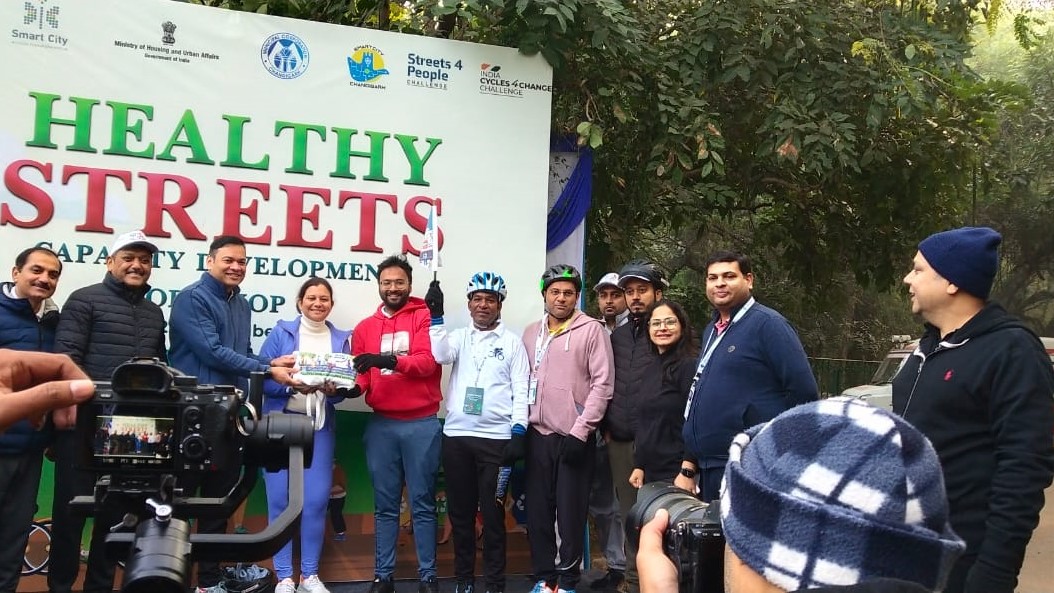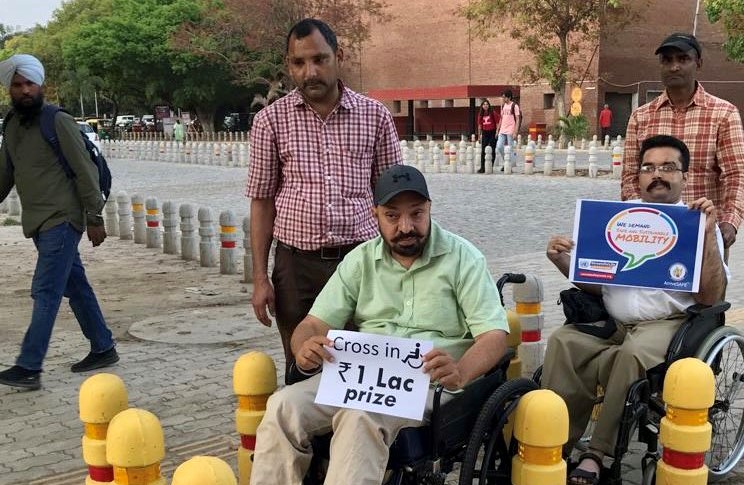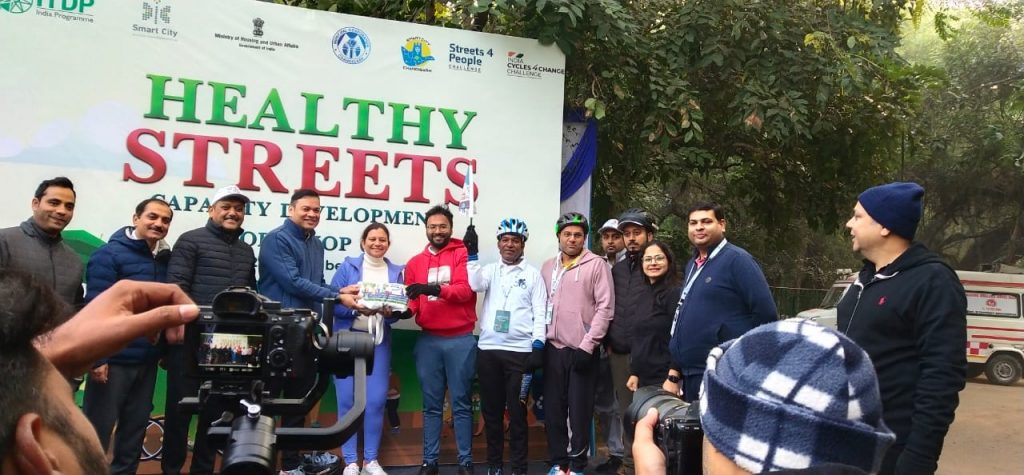
NGOs are the eyes, ears, and voices of their communities. Find below two stories from two cities, Chandigarh and Patiala, Punjab, India, demonstrating how Alliance members are representing pedestrians and other vulnerable road users and collecting data to show their authorities what needs to be done to make walking and cycling safe in their cities.

Chandigarh is one of the youngest and planned cities in India. It was designed for livability with plenty of walking infrastructure and greenery. However, over the years, motorized vehicles were prioritized, green spaces impacted, and footpaths encroached on.
Alliance member ArriveSAFE is advocating to reclaim pedestrian space that has been lost, for example where parking spaces have replaced pedestrian areas, vendors have taken up the footpaths so that pedestrians must walk on the road, or where traffic calming is needed to reduce speeds and protect vulnerable road users. Their work also extends to the accessibility issues faced by people with disabilities, for example, whether ramps have been implemented and if barriers designed to allow pedestrians but block motor vehicles are negotiable in a wheelchair. Issues are identified by the team or by members of the public, who ask ArriveSAFE to intervene. ArriveSAFE’s team of technical experts conduct surveys and collect data so that they can present solutions based on best practice and national regulations to the city authorities.
While there is much more to be done, ArriveSAFE’s work is seeing results; the city authorities have restored walking areas that had been turned into parking in one of two areas identified by ArriveSAFE and is conducting surveys in five further sectors. They have also plugged entry and exit points to certain sectors to control vehicle access, keep residents safe and smooth the flow of traffic and implemented pedestrian crossings and traffic calming around hospitals and schools. ArriveSAFE will conduct further surveys to ensure the work has been completed effectively.
“The safety level of a city’s transport system is measured by how it treats its pedestrians and cyclists,” says Harman Singh, Founder of ArriveSAFE.

“Having a platform with the authorities has enabled us to challenge and address potential issues on behalf of pedestrians before implementation happens,” says Ravee Singh Ahluwalia, Chief Functionary of Alliance member The Patiala Foundation, Patiala, India.
In Patiala, city authorities have already recognized the need to make walking safe around the city. On the back of advocacy from The Patiala Foundation that showed that almost half of commuters walked or cycled to work (read more HERE), footpaths have been restored on a number of streets where they had previously been removed to increase space for motorized traffic. Moreover, the authorities have committed to include footpaths in all road upgrades on newer roads and will also pilot a dedicated cycle lane on one of the city roads used by a lot of school and college students as well as other major community stakeholders.
Sometimes, however, well-intentioned road safety solutions are decided without fully understanding the needs of those who will use them. In 2019, with the intention of making it easier and safer for elderly pedestrians to attend the local temple, the Patiala city authorities built two new pedestrian footbridges in the city. Two further footbridges were planned. However, instead of making crossing the road safer and easier, the footbridges were inconvenient, increasing the journey time and forcing the elderly road users to walk up and down a considerable number of steps. As member of Patiala’s road safety committee, Ravee became aware of other similar road projects.
Patiala Foundation conducted surveys among those walking to and from the temple and presented the data they collected at a public exhibition, demonstrating that the footbridges were not being used and that pedestrians were still crossing the road at street level, at risk from motorized vehicles. As a result, plans to construct other such road infrastructure were shelved. The city authorities have formally requested the state-level traffic planners to draw up a different solution to manage the flow of traffic and enable pedestrians to cross the road safely at street level in places where there is chaotic traffic.
Patiala Foundation is also working with the government to keep the footpaths clear. Street vendors have taken over sections of the city’s footpaths, forcing pedestrians to walk on the road. To address this in a way that benefits street vendors as well as pedestrians, hawker zones have been created and vendors are given permits to move their trade to these zones. These zones give street vendors a regular spot and make it easier for regular shoppers to find them.
Much of Patiala Foundation’s advocacy success is a result of its position on the road safety committee, which has enabled it to be heard and to bring pedestrians’ challenges forward. With the help of its volunteers, the NGO carries out regular traffic obstacle assessment walks and submit its reports in the monthly committee meetings. This flags issues and enables decisions to be taken by the stakeholders responsible for implementation and execution.
The NGO is now extending it’s reach to the Punjab state capital, Chandigarh, and working with the authorities to advocate and carry out awareness amongst the citizens regarding non-motorized transport. It is also involved with the Muncipal Corporation’s drafting of a non-motorized transport policy to enhance safety and security for pedestrians, cyclists and other non-motorized transport users.
“If we are able to walk to work, we don’t need to drive to the gym after work,” says Ravee. “People are health conscious and they want to save money. If they feel safe, they will be more willing to adopt walking for short distances, such as to the shops.”